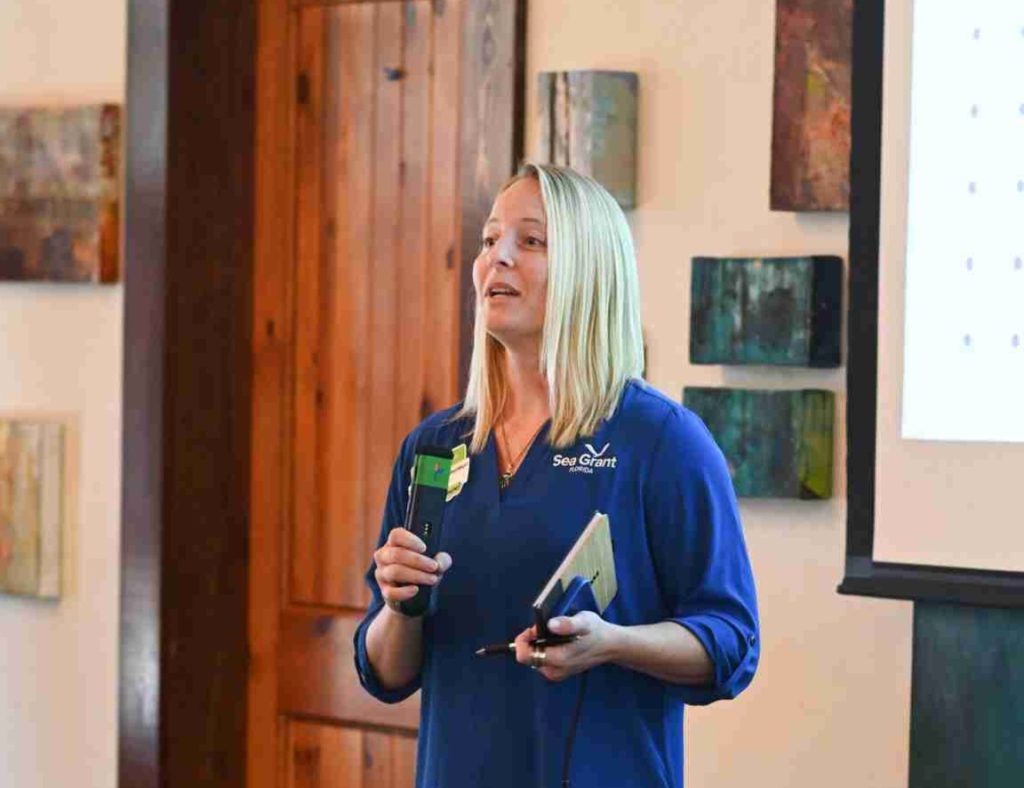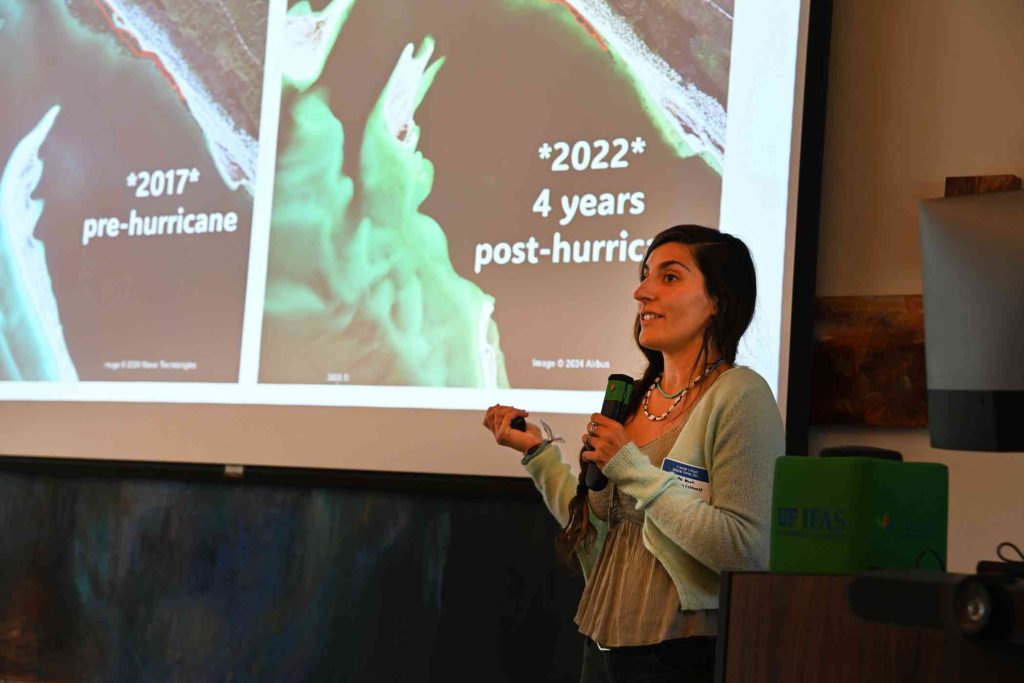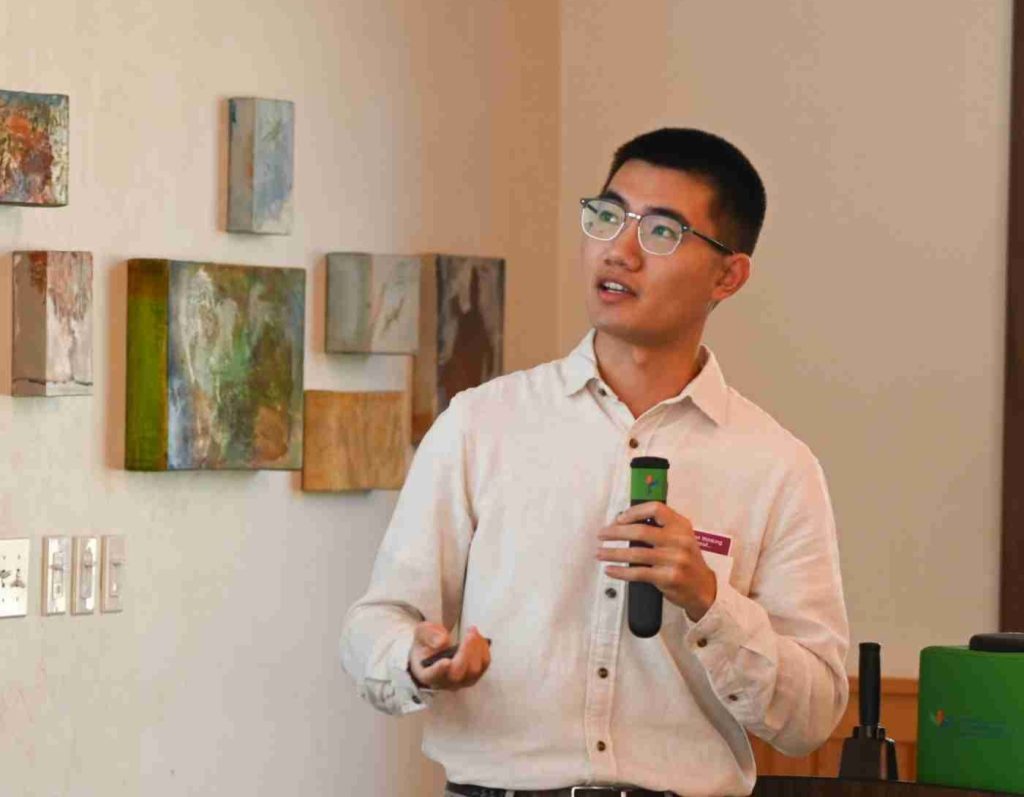The survival of eelgrass, once the dominant seagrass species in Chesapeake Bay—the nation’s largest estuary—is now severely threatened, primarily due to rising temperatures and heatwaves. Traditional seagrass restoration efforts in the bay have struggled to sustain healthy seagrass meadows. However, innovative research led by experts such as Enie Hensel, Ph.D., is yielding promising results, offering hope for restoring seagrass in the face of increasing temperatures.
Enie, a senior postdoctoral research associate at the UF Nature Coast Biological Field Station and UF Department of Soil, Water, and Ecosystem Sciences, led an experiment that expanded seagrass habitat restoration in the bay by 98 percent, using adaptive strategies to address changing environmental conditions. Enie and her team turned to widgeongrass, a heat-tolerant native species, to improve the chances of successful restoration and strengthen the bay’s ecosystem resilience.

“Our restoration took a proactive approach to combat climate change impacts,” said Enie. “We wanted to avoid a point of no return for seagrasses. We started testing ideas to effectively mitigate seagrass loss and promote ecosystem stability for both present and future environmental changes.”
Enie was one of four researchers from the University of Florida who presented their work in lightning talks at the Optimizing Solutions for Resilient Coasts summit, held on December 13 at the Austin Cary Forest Campus in Gainesville. Among them was also Beatriz Marin-Diaz, Ph.D., a postdoctoral researcher at the Center for Coastal Solutions (CCS). She shared a novel, short-term solution to combat seagrass loss in St. Andrew Sound, Florida: the use of bamboo. Her team strategically placed bamboo stakes along an eroding seagrass meadow edge where seagrass is retreating due to a combination of sediment erosion, burial and grazing by marine animals. Protecting the meadow edge from grazing resulted in denser, burial resilient seagrass and ultimately a reduction in meadow retreat.

“Presenting at the summit was a great opportunity to exchange ideas with experts from diverse backgrounds and gain new perspectives,” said Marin-Diaz. “I was excited to discuss the possibilities for large-scale implementation of this work with other attendees.”
The lightning talk series also included Yiyang “Calvin” Kang, a Ph.D. candidate at the University of Florida’s School of Natural Resources and Environment, who presented findings on how the northward spread of mangroves could impact blue carbon, the carbon stored in coastal and marine ecosystems. Other research topics focused on alternative materials and designs to improve the sustainability of oyster gardens. Traditionally made from plastics and metals, these small reefs are often suspended from docks and in waterways, noted Adrian Sakr, a Ph.D. candidate in the Department of Environmental Engineering Sciences, who aims to reduce the environmental impact of this restoration method while also involving local communities in the process.


“The summit was the perfect chance to show our work supporting oyster restoration in southwest Florida,” said Sakr. “I had great engagement afterward with attendees from UF, IFAS and more who are interested in community-based ecological restoration, including Dr. Marc Hensel. We’re now planning to replicate this testing with his lab next semester in Cedar Key.”
—
By Megan Sam
